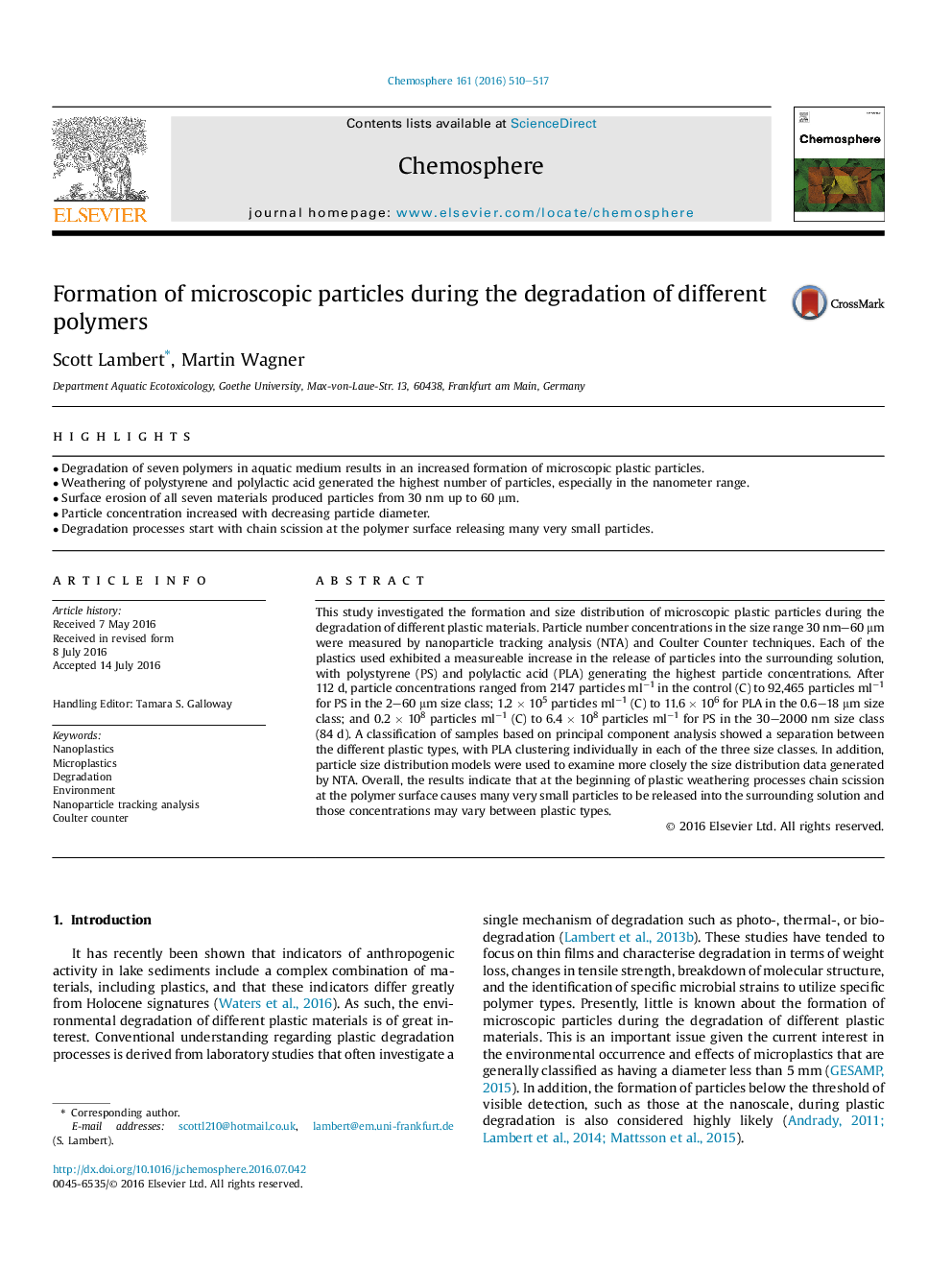| Article ID | Journal | Published Year | Pages | File Type |
|---|---|---|---|---|
| 6306510 | Chemosphere | 2016 | 8 Pages |
Abstract
This study investigated the formation and size distribution of microscopic plastic particles during the degradation of different plastic materials. Particle number concentrations in the size range 30 nm-60 μm were measured by nanoparticle tracking analysis (NTA) and Coulter Counter techniques. Each of the plastics used exhibited a measureable increase in the release of particles into the surrounding solution, with polystyrene (PS) and polylactic acid (PLA) generating the highest particle concentrations. After 112 d, particle concentrations ranged from 2147 particles mlâ1 in the control (C) to 92,465 particles mlâ1 for PS in the 2-60 μm size class; 1.2 Ã 105 particles mlâ1 (C) to 11.6 Ã 106 for PLA in the 0.6-18 μm size class; and 0.2 Ã 108 particles mlâ1 (C) to 6.4 Ã 108 particles mlâ1 for PS in the 30-2000 nm size class (84 d). A classification of samples based on principal component analysis showed a separation between the different plastic types, with PLA clustering individually in each of the three size classes. In addition, particle size distribution models were used to examine more closely the size distribution data generated by NTA. Overall, the results indicate that at the beginning of plastic weathering processes chain scission at the polymer surface causes many very small particles to be released into the surrounding solution and those concentrations may vary between plastic types.
Keywords
Related Topics
Life Sciences
Environmental Science
Environmental Chemistry
Authors
Scott Lambert, Martin Wagner,
